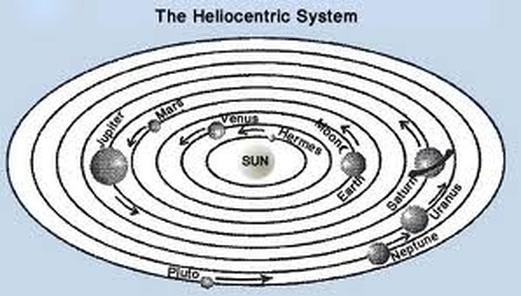 Considered the father of modern science, Galileo Galilei (1564-1642) made major contributions to the fields of physics, astronomy, cosmology, mathematics and philosophy. He invented an improved telescope that let him observe and describe the moons of Jupiter, the rings of Saturn, the phases of Venus, sunspots and the rugged lunar surface. His flair for self-promotion earned him powerful friends among Italy’s ruling elite and enemies among the Catholic Church’s leaders. His advocacy of a heliocentric universe brought him before religious authorities in 1616 and again in 1633, when he was forced to recant and placed under house arrest for the rest of his life.
Considered the father of modern science, Galileo Galilei (1564-1642) made major contributions to the fields of physics, astronomy, cosmology, mathematics and philosophy. He invented an improved telescope that let him observe and describe the moons of Jupiter, the rings of Saturn, the phases of Venus, sunspots and the rugged lunar surface. His flair for self-promotion earned him powerful friends among Italy’s ruling elite and enemies among the Catholic Church’s leaders. His advocacy of a heliocentric universe brought him before religious authorities in 1616 and again in 1633, when he was forced to recant and placed under house arrest for the rest of his life.
GALILEO’S EARLY LIFE, EDUCATION AND EXPERIMENTS
Galileo Galilei was born in Pisa in 1564, the first of six children of Vincenzo Galilei, a musician and scholar. In 1581 he entered the University of Pisa to study medicine, but was soon sidetracked by mathematics. In 1583 he made his first important discovery, describing the rules that govern the motion of pendulums.
From 1589 to 1610, Galileo was chair of mathematics at the universities of Pisa and then Padua. During those years he performed the experiments with falling bodies that made his most significant contribution to physics.
GALILEO, TELESCOPES AND THE MEDICI COURT
In 1609 Galileo built his first telescope, improving upon a Dutch design. In January of 1610 he discovered four new “stars” orbiting Jupiter—the planet’s four largest moons. He quickly published a short treatise outlining his discoveries, “Siderius Nuncius” (“The Starry Messenger”), which also contained observations of the moon’s surface and descriptions of a multitude of new stars in the Milky Way. In an attempt to gain favor with the powerful grand duke of Tuscany, Cosimo II de Medici, he suggested Jupiter’s moons be called the “Medician Stars.”
“The Starry Messenger” made Galileo a celebrity in Italy. Cosimo II appointed him mathematician and philosopher to the Medicis, offering him a platform for proclaiming his theories and ridiculing his opponents.
Galileo’s observations contradicted the Aristotelian view of the universe, then widely accepted by both scientists and theologians. The moon’s rugged surface went against the idea of heavenly perfection, and the orbits of the Medician stars violated the geocentric notion that the heavens revolved around Earth.
GALILEO ON TRIAL
In 1616 the Catholic Church placed Nicholas Copernicus’ “De Revolutionibus,” the first modern scientific argument for a heliocentric (sun-centered) universe, on its index of banned books. Pope Paul V summoned Galileo to Rome and told him he could no longer support Copernicus publicly.
In 1632 Galileo published his “Dialogue Concerning the Two Chief World Systems,” which supposedly presented arguments for both sides of the heliocentrism debate. His attempt at balance fooled no one, and it especially didn’t help that his advocate for geocentrism was named “Simplicius.”
Galileo was summoned before the Roman Inquisition in 1633. At first he denied that he had advocated heliocentrism, but later he said he had only done so unintentionally. Galileo was convicted of “vehement suspicion of heresy” and under threat of torture forced to express sorrow and curse his errors.
Nearly 70 at the time of his trial, Galileo lived his last nine years under comfortable house arrest, writing a summary of his early motion experiments that became his final great scientific work.
GALILEO’S LEGACY
Galileo’s motion experiments paved the way for the codification of classical mechanics by Isaac Newton. His heliocentrism (with modifications by Kepler) soon became accepted scientific fact. His inventions, from compasses and balances to improved telescopes and microscopes, revolutionized astronomy and biology. And his penchant for thoughtful and inventive experimentation pushed the scientific method toward its modern form.
In his conflict with the Church, Galileo was also largely vindicated. Enlightenment thinkers like Voltaire used tales of his trial (often in simplified and exaggerated form) to portray Galileo as a martyr for objectivity. Recent scholarship suggests Galileo’s actual trial and punishment were as much a matter of courtly intrigue and philosophical minutiae as of inherent tension between religion and science.
In 1744 Galileo’s “Dialogue” was removed from the Church’s list of banned books, and in the 20th century Popes Pius XII and John Paul II made official statements of regret for how the Church had treated Galileo.

